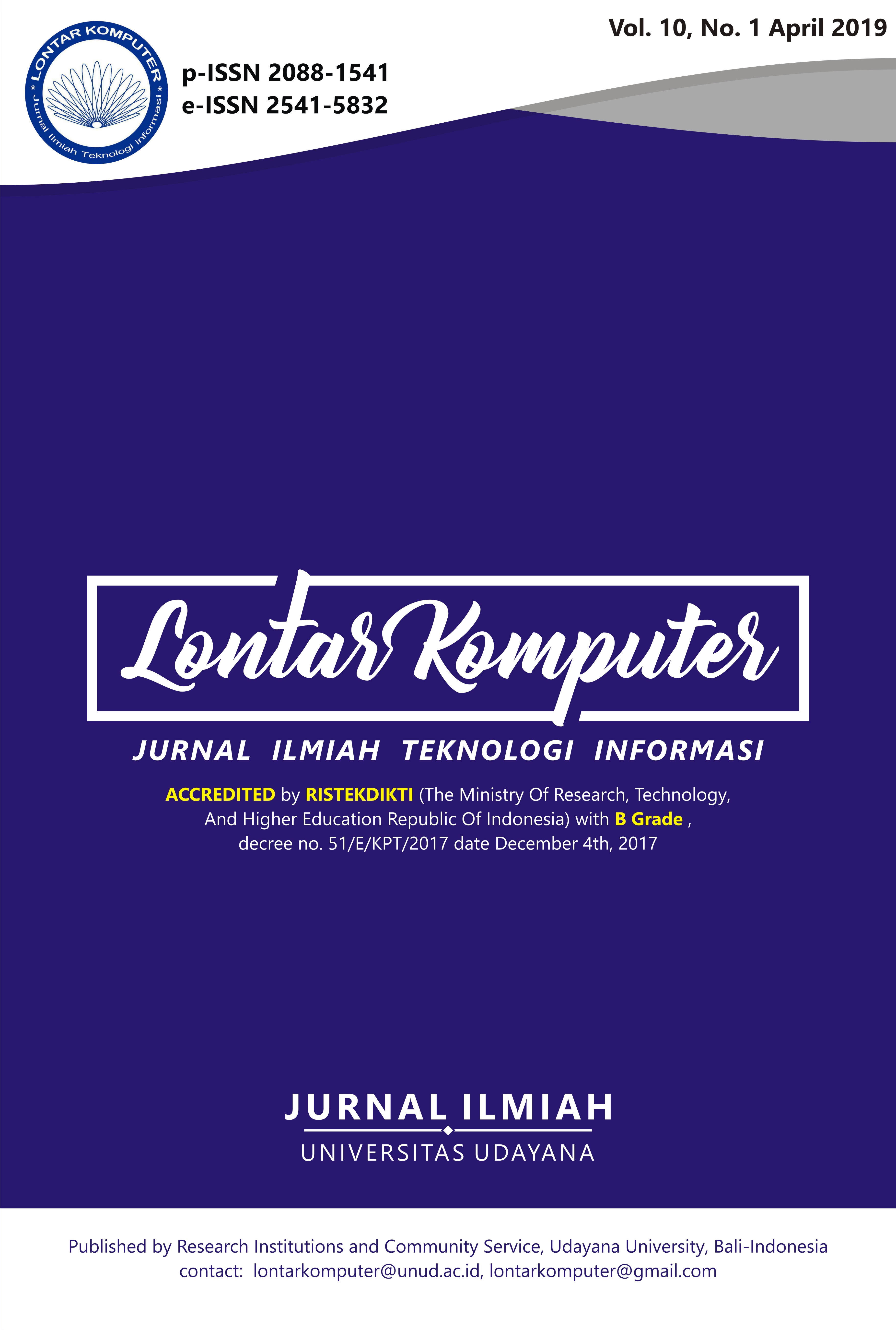Decision Support System for the Selection of Outstanding Students Using the AHP-TOPSIS Combination Method
Abstract
This research develops a decision support system for the selection of outstanding students by combining AHP and TOPSIS methods. AHP method was used because it could be implemented to this data and do the priority ranking process for each criterion based on pairwise comparison matrix. The TOPSIS method was used because the concept of the chosen alternative does not only have the shortest distance from the positive ideal solution, but also has the longest distance from the negative ideal solution. The purpose of this study was finding out the workings of the TOPSIS method and the AHP-TOPSIS combination method, as well as to find out the comparison of the best methods between TOPSIS and the combination method of AHP-TOPSIS in the selection of outstanding students. The concept of TOPSIS is simple and easy to understand and has the ability to measure decision alternatives while AHP is not chosen because the AHP method is widely used in the case of criteria weighting and priority determination of each criterion. However, if the two methods were combined the results will be better because in AHP there is an eigenvector concept which is used to do the priority ranking process for each criterion based on pairwise comparison matrix, then the results of the weighting criteria are processed by the TOPSIS method for ranking process. The application of the TOPSIS method on the selection of outstanding students can be analyzed with the results of the presentation using Hamming Distance incompatibility is 93%. Meanwhile, the application of the AHP-TOPSIS combination method gets the presentation results using Hamming Distance incompatibility is 91%. Based on these results in this study it can be concluded that the AHP-TOPSIS combination method is better than the TOPSIS method.
Downloads
References
[2] P. O. Rahmanda, R. Arifudin, and M. A. Muslim, “Implementation of Analytic Network Process Method on Decision Support System of Determination of Scholarship Recipient at House of Lazis Charity UNNES,” Scientific Journal Informatics, vol. 4, no. 2, pp. 199–211, 2017.
[3] A. Nurzahputra, A. R. Pranata, and A. Puwinarko, “Sistem Pendukung Keputusan Pemilihan Line-up Pemain Sepak Bola Menggunakan Metode Fuzzy Multiple Attribute Decision Making dan K-Means Clustering,”Jurnal Teknologi dan Sistem Komputer, vol. 5, no. 3, pp. 106–109, 2017.
[4] K. B. Leng, S. J. K. C. C. Tong, J. Kempas, and T. K. Putri, “The Relationship between Self-Concept, Intrinsic Motivation, Self-Determination and Academic Achievement among Chinese Primary School Students,” International Journal of Psychological Studies, vol. 3, no. 1, pp. 90–98, 2011.
[5] S. F. Ng et al., “A study of time use and academic achievement among secondary-school students in the state of,” International Journal of Adolescence and Youth, vol. 3843, pp. 1–16, 2016.
[6] J. Chen, H. Nie, and K. Li, “Evaluation and Selection Model of Strategic Emerging Industries in Guangdong Province of China Based on AHP-TOPSIS,” International Journal of Business and Management, vol. 10, no. 11, pp. 161–168, 2015.
[7] I. Engineering, E. Triantaphyllou, and S. H. Mann, “Using The Analytic Hierarchy Process For Decision Making In Engineering Applications : Some Challenges,” Inter'l Journal of Industrial Engineering: Applications and Practice, vol. 2, no. 1, pp. 35–44, 1995.
[8] S. Gurung and R. Phipon, “Multi-criteria decision making for supplier selection using AHP and TOPSIS method,” International Journal of Engineering Inventions, vol. 6, no. 2, pp. 13–17, 2016.
[9] G. Kabir and M. A. A. Hasin, “Comparative Analysis of TOPSIS and Fuzzy TOPSIS for the Evaluation of Travel Website Service Quality,” International Journal for Qaultity Reseach, vol. 6, no. 3, pp. 169–185, 2012.
[10] M. Zeydan and C. Çolpan, “A new decision support system for performance measurement using combined fuzzy TOPSIS / DEA approach,” International Journal of Production Reseach, vol. 47, no. 15, 2009, pp. 4327–4349.
[11] E. Nur, S. Purnomo, S. Widya, and R. Anggrainingsih, “Analisis Perbandingan Menggunakan Metode AHP , TOPSIS , dan AHP-TOPSIS dalam Studi Kasus Sistem Pendukung Keputusan Penerimaan Siswa Program Akselerasi,” ITSMART: Jurnal Teknologi Informasi, vol. 2, no. 1, 2013.
[12] I. H. Firdaus et al., “Sistem Pendukung Keputusan Penentuan Karyawan Terbaik,” Seminar Nasional Teknologi Informasidan Komunikasi 2016 (Sentika), pp. 18–19, 2016.
[13] P. T. Kazibudzki, “On Some Discoveries in the Field of Scientific Methods for Management within the Concept of Analytic Hierarchy Process,” International Journal of Business and Management, vol. 8, no. 8, pp. 22–30, 2013.
[14] K. Eylem and H. A. Burhan, “An Application of Analytic Hierarchy Process (AHP) in a Real World Problem of Store Location Selection,” Advances in Management & Applied Economics, vol. 5, no. 1, pp. 41–50, 2015.
[15] C. A. Josaputri, E. Sugiharti, and R. Arifudin, “Decision Support Systems for The Determination of Cattle with Superior Seeds using AHP and SAW Method,”Scientific Journal of Informatics, vol. 3, no. 2, pp. 21–30, 2016.
[16] S. Kusumadewi, S. Hartati, S. Harjoko, A. Wardoyo and Retantyo. “Fuzzy Multi-Attribute Decision Making ( Fuzzy MADM ),” Yogyakarta: Graha Ilmu, p. 78-79.
The Authors submitting a manuscript do so on the understanding that if accepted for publication, the copyright of the article shall be assigned to Jurnal Lontar Komputer as the publisher of the journal. Copyright encompasses exclusive rights to reproduce and deliver the article in all forms and media, as well as translations. The reproduction of any part of this journal (printed or online) will be allowed only with written permission from Jurnal Lontar Komputer. The Editorial Board of Jurnal Lontar Komputer makes every effort to ensure that no wrong or misleading data, opinions, or statements be published in the journal.
 This work is licensed under a Creative Commons Attribution 4.0 International License.
This work is licensed under a Creative Commons Attribution 4.0 International License.























